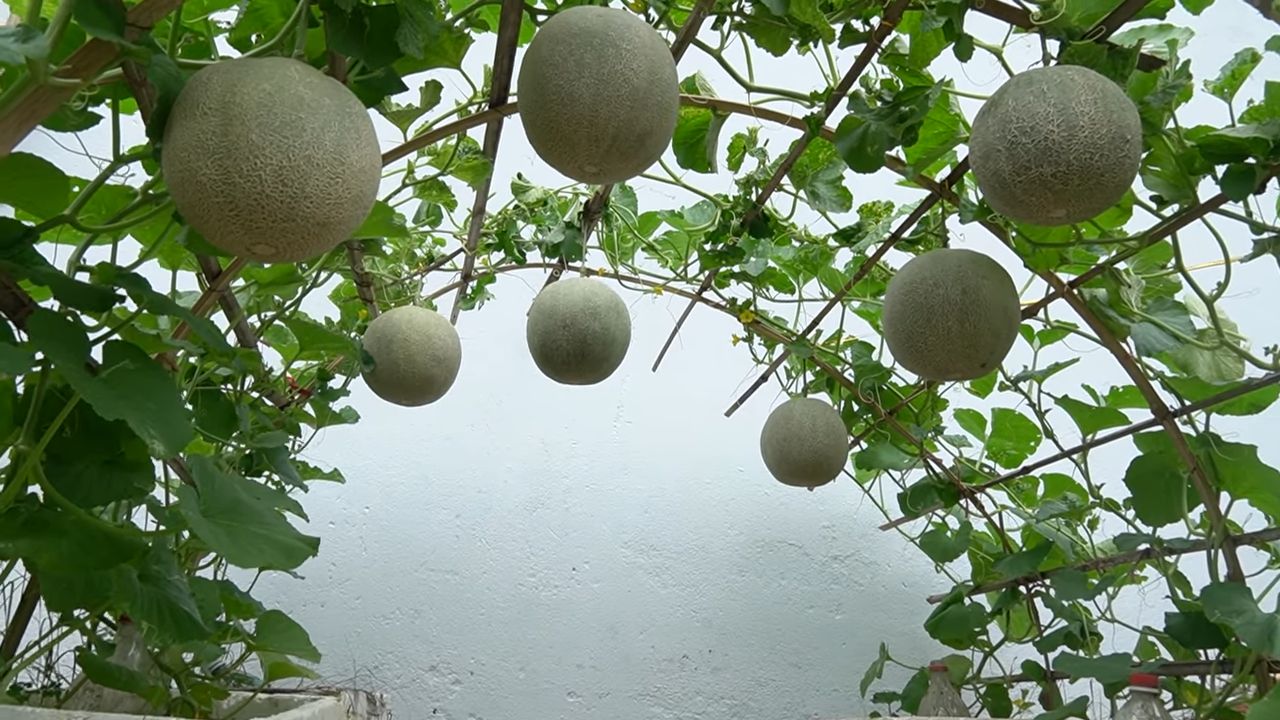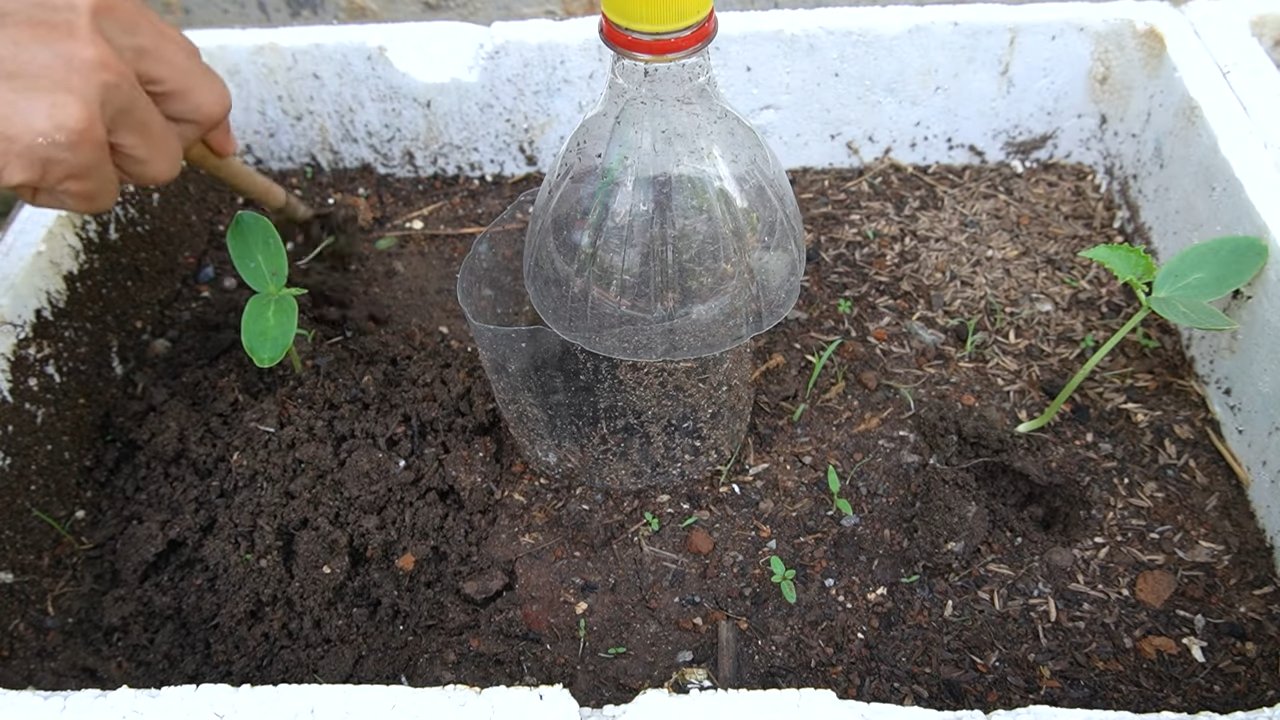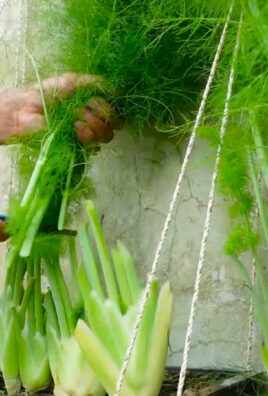Sweet Cantaloupe Growing Tips are what every home gardener dreams of! Imagine biting into a juicy, perfectly ripe cantaloupe, bursting with flavor, all thanks to your own green thumb. Forget those bland, store-bought melons – we’re talking about homegrown sweetness that’s simply unmatched. For centuries, cantaloupe has been a symbol of summer abundance, enjoyed by cultures around the world. From ancient Egypt to the royal gardens of Europe, this delicious fruit has held a special place in culinary history.
But let’s be honest, growing cantaloupe can sometimes feel like a gamble. You put in the effort, only to end up with small, tasteless fruits. That’s where these DIY tricks come in! I’m here to share my tried-and-true methods for maximizing your cantaloupe harvest. These aren’t just random tips; they’re practical, easy-to-implement hacks that will make a real difference. Whether you’re a seasoned gardener or just starting out, these sweet cantaloupe growing tips will empower you to cultivate the most delicious melons you’ve ever tasted. Get ready to impress your friends and family with your homegrown bounty!

How to Grow the Sweetest Cantaloupe You’ve Ever Tasted
Okay, let’s talk cantaloupe! I absolutely adore a perfectly ripe, juicy, and sweet cantaloupe. But let’s be honest, sometimes the ones you buy at the store are… well, disappointing. That’s why I started growing my own, and after a few seasons of trial and error, I’ve finally cracked the code to consistently producing incredibly sweet cantaloupes. I’m going to share all my secrets with you!
Choosing the Right Cantaloupe Variety
The first step to cantaloupe success is picking the right variety. Not all cantaloupes are created equal! Some are naturally sweeter and more disease-resistant than others. Here are a few of my personal favorites:
* Athena: This is a classic choice for a reason. It’s reliable, disease-resistant, and produces consistently sweet melons. It’s also relatively early-maturing, which is great if you have a shorter growing season.
* Hales Best Jumbo: An heirloom variety known for its exceptional flavor. It might be a little more susceptible to disease than some modern hybrids, but the taste is worth the extra care.
* Ambrosia: As the name suggests, this cantaloupe is heavenly! It’s incredibly sweet and aromatic. It’s also a good choice for smaller gardens as the vines are a bit more compact.
* Sugar Cube: If you want a smaller cantaloupe that packs a serious sweet punch, Sugar Cube is your winner. These are perfect for single servings and are super easy to grow.
When choosing your variety, consider your local climate, the amount of space you have, and your personal taste preferences. Read seed descriptions carefully to find the perfect fit for your garden.
Preparing Your Garden Bed
Cantaloupes are sun-loving, nutrient-hungry plants. To give them the best start, you need to prepare your garden bed properly.
* Sunlight: Cantaloupes need at least 6-8 hours of direct sunlight per day. Choose a location in your garden that gets plenty of sunshine.
* Soil: Cantaloupes thrive in well-drained, fertile soil. Amend your soil with plenty of organic matter, such as compost or well-rotted manure. This will improve drainage, add nutrients, and help retain moisture.
* pH: The ideal soil pH for cantaloupes is between 6.0 and 6.8. You can test your soil pH with a home testing kit or send a sample to your local agricultural extension office. If your soil is too acidic, you can add lime to raise the pH. If it’s too alkaline, you can add sulfur to lower the pH.
* Fertilizer: Cantaloupes are heavy feeders, so you’ll need to fertilize them regularly. Before planting, incorporate a balanced fertilizer into the soil, such as 10-10-10.
Planting Your Cantaloupe
You can start cantaloupe seeds indoors or direct sow them in your garden. I prefer to start them indoors to get a head start on the growing season, especially since I live in an area with a shorter summer.
Starting Seeds Indoors
1. Timing: Start your seeds indoors about 4-6 weeks before the last expected frost.
2. Containers: Use peat pots or biodegradable pots to avoid disturbing the roots when transplanting.
3. Soil: Use a seed-starting mix that is light and well-draining.
4. Planting: Plant 2-3 seeds per pot, about ½ inch deep.
5. Watering: Keep the soil consistently moist but not soggy.
6. Light: Provide plenty of light, either with a grow light or by placing the pots in a sunny window.
7. Thinning: Once the seedlings emerge, thin them to one plant per pot. Choose the strongest, healthiest seedling.
8. Hardening Off: Before transplanting, gradually acclimate the seedlings to outdoor conditions by hardening them off. This involves exposing them to increasing amounts of sunlight and wind over a period of 7-10 days.
Direct Sowing
1. Timing: Direct sow seeds after the last expected frost, when the soil has warmed to at least 60°F (15°C).
2. Planting: Plant seeds about 1 inch deep, spacing them 18-24 inches apart in rows that are 4-6 feet apart.
3. Watering: Keep the soil consistently moist until the seedlings emerge.
4. Thinning: Once the seedlings emerge, thin them to one plant per 18-24 inches.
Caring for Your Cantaloupe Plants
Once your cantaloupe plants are established, it’s important to provide them with the care they need to thrive.
* Watering: Cantaloupes need consistent watering, especially during hot, dry weather. Water deeply and regularly, aiming for about 1-2 inches of water per week. Avoid overhead watering, as this can promote fungal diseases. Drip irrigation or soaker hoses are ideal.
* Fertilizing: Side-dress your cantaloupe plants with a balanced fertilizer every 2-3 weeks. You can also use a liquid fertilizer, such as fish emulsion or seaweed extract.
* Weeding: Keep your garden bed free of weeds, as they can compete with your cantaloupe plants for nutrients and water. Mulch around the plants to suppress weeds and help retain moisture.
* Pruning: While not essential, pruning can help improve air circulation and encourage fruit production. Remove any suckers (small shoots that grow from the base of the plant) and any yellowing or diseased leaves.
* Pest and Disease Control: Cantaloupes can be susceptible to various pests and diseases, such as aphids, squash bugs, powdery mildew, and fusarium wilt. Monitor your plants regularly for signs of problems and take action promptly. Use organic pest control methods whenever possible, such as insecticidal soap or neem oil. For fungal diseases, improve air circulation and avoid overhead watering.
The Secret to Sweetness: Stressing Your Cantaloupes (Slightly!)
This is where the magic happens! To get those super-sweet cantaloupes, you need to stress them out a little bit towards the end of the growing season. Don’t worry, we’re not talking about neglecting them entirely, but rather manipulating their water intake.
* Reduce Watering: About 1-2 weeks before you expect your cantaloupes to ripen, reduce watering significantly. The plant will sense the lack of water and concentrate its sugars in the fruit to attract animals to eat the seeds and spread them. This is a natural survival mechanism!
* Don’t Overdo It: Be careful not to let the plants completely dry out, as this can cause the fruit to crack or split. The goal is to stress them, not kill them. I usually reduce watering to about half of what I was giving them before.
* Watch for Signs: Keep a close eye on your plants. If the leaves start to wilt excessively or the fruit starts to shrivel, give them a little water.
Harvesting Your Cantaloupe
Knowing when to harvest your cantaloupe is crucial for getting that perfect sweetness. Here are a few signs to look for:
* Color Change: The skin of the cantaloupe will change from green to a tan or yellowish color.
* Aroma: A ripe cantaloupe will have a sweet, musky aroma.
* Stem Slip: The stem where the cantaloupe is attached to the vine will start to crack and separate easily. This is called “slipping.” If the cantaloupe comes off the vine with a gentle tug, it’s ready to harvest.
* Sound: Give the cantaloupe a gentle tap. A ripe cantaloupe will sound hollow.
Once you’ve harvested your cantaloupe, let it sit at room temperature for a day or two to allow the sugars to develop further. Then, refrigerate it for a few hours before eating.
Troubleshooting
Even with the best care, you might encounter some problems along the way. Here are a few common issues and how to address them:
* Poor Fruit Set: If your cantaloupe plants are producing flowers but not setting fruit, it could be due to a lack of pollination. Cantaloupes rely on bees and other pollinators to transfer pollen from the male flowers to the female flowers. You can hand-pollinate the flowers yourself by using a small paintbrush to transfer pollen from the male flowers to the female flowers.
* Cracked Fruit: Cracked fruit can be caused by inconsistent watering or sudden changes in temperature. Maintain consistent watering and protect your plants from extreme temperature fluctuations.
* Powdery Mildew: Powdery mildew is a fungal disease that can cause a white, powdery coating on the leaves. Improve air circulation and avoid overhead

Conclusion
Achieving that perfectly sweet and juicy cantaloupe at home might seem like a gardener’s dream, but with these simple yet effective DIY tricks, it’s an attainable reality. We’ve explored the secrets to maximizing sweetness, from selecting the right variety and preparing the soil to mastering the art of watering and providing adequate sunlight. These aren’t just suggestions; they are proven methods that can transform your cantaloupe harvest from bland to bursting with flavor.
The beauty of these techniques lies in their adaptability. Feel free to experiment with different soil amendments based on your local conditions. For instance, if your soil is naturally alkaline, consider adding sulfur to lower the pH. If you’re growing cantaloupes in containers, ensure they are large enough to accommodate the plant’s root system and use a high-quality potting mix specifically formulated for vegetables. You can also try companion planting with herbs like basil or marigolds, which are known to deter pests and attract beneficial insects. Another variation to consider is vertical gardening. Training your cantaloupe vines to grow on a trellis not only saves space but also improves air circulation, reducing the risk of fungal diseases.
But the real magic happens when you put these tips into practice. Imagine biting into a homegrown cantaloupe, its sweetness intensified by your own efforts. The satisfaction of nurturing a plant from seed to fruit is unparalleled, and the taste of a perfectly ripened, sweet cantaloupe is a reward well worth the effort.
Don’t just take our word for it. We wholeheartedly encourage you to try these DIY tricks for growing sweeter cantaloupes. Start small, perhaps with just a few plants, and observe how they respond to different techniques. Keep a gardening journal to track your progress and note any variations that work particularly well in your specific environment.
The journey of growing your own food is a continuous learning experience, and we believe that sharing our knowledge and experiences is key to success. So, after you’ve harvested your first batch of sweet cantaloupes, we invite you to share your results with us and the wider gardening community. What worked best for you? Did you discover any new tricks along the way? Your insights could help other gardeners achieve their own cantaloupe-growing dreams. Let’s cultivate a community of passionate gardeners, all striving for that perfect, sweet cantaloupe.
We are confident that by implementing these strategies, you’ll be well on your way to enjoying the most delicious, homegrown cantaloupes you’ve ever tasted. Happy gardening!
Frequently Asked Questions (FAQ)
What is the most important factor in growing sweet cantaloupes?
The most crucial factor is a combination of adequate sunlight, proper watering techniques, and nutrient-rich soil. Cantaloupes need at least 6-8 hours of direct sunlight daily to develop their sugars. Consistent watering, especially during fruit development, is essential, but avoid overwatering, which can dilute the sugars and lead to bland fruit. Finally, ensuring the soil is rich in organic matter and essential nutrients like potassium and phosphorus is vital for sweetness.
How often should I water my cantaloupe plants?
Water deeply but infrequently. Aim for about 1-2 inches of water per week, depending on the weather and soil type. Water at the base of the plant to avoid wetting the foliage, which can encourage fungal diseases. During fruit development, increase watering slightly, but be careful not to overwater. A good way to check is to stick your finger about 2 inches into the soil near the plant. If it feels dry, it’s time to water.
What kind of fertilizer should I use for cantaloupes?
Use a balanced fertilizer with a higher potassium and phosphorus content than nitrogen. A fertilizer with an NPK ratio of 5-10-10 or similar is a good choice. Apply fertilizer according to the package instructions, typically every 2-3 weeks during the growing season. You can also amend the soil with compost or aged manure to provide a slow-release source of nutrients. Avoid over-fertilizing with nitrogen, as this can promote leafy growth at the expense of fruit production and sweetness.
How do I know when my cantaloupe is ripe?
Several indicators signal ripeness. First, the stem should easily slip from the vine with a gentle tug. This is known as the “full slip” stage. Second, the skin color should change from green to a tan or yellowish hue, depending on the variety. Third, the blossom end (opposite the stem) should feel slightly soft and give off a sweet aroma. Finally, the netting on the rind should become more pronounced and raised.
Can I grow cantaloupes in containers?
Yes, you can grow cantaloupes in containers, but you’ll need a large container (at least 20 gallons) to accommodate the plant’s root system. Choose a dwarf or bush variety of cantaloupe that is better suited for container growing. Use a high-quality potting mix and ensure the container has good drainage. Water regularly and fertilize as needed. Provide support for the vines, such as a trellis or stake.
What are some common pests and diseases that affect cantaloupes?
Common pests include aphids, squash bugs, cucumber beetles, and vine borers. Diseases include powdery mildew, downy mildew, and fusarium wilt. Regularly inspect your plants for signs of pests or diseases and take appropriate action, such as using insecticidal soap, neem oil, or copper fungicide. Crop rotation and good sanitation practices can also help prevent problems.
How can I improve the soil for growing cantaloupes?
Amend the soil with plenty of organic matter, such as compost, aged manure, or leaf mold. This will improve drainage, aeration, and nutrient content. Cantaloupes prefer slightly acidic to neutral soil with a pH of 6.0-6.8. If your soil is too alkaline, you can add sulfur to lower the pH. Conduct a soil test to determine the pH and nutrient levels and amend accordingly.
What are some good companion plants for cantaloupes?
Beneficial companion plants include basil, marigolds, nasturtiums, and oregano. Basil repels aphids and other pests, while marigolds deter nematodes and other soil-borne pests. Nasturtiums attract beneficial insects, and oregano is a natural fungicide. Avoid planting cantaloupes near members of the cabbage family, such as broccoli and cauliflower, as they can compete for nutrients.
How long does it take for cantaloupes to mature?
Cantaloupes typically take 70-90 days to mature from seed to harvest, depending on the variety and growing conditions. Start seeds indoors 4-6 weeks before the last expected frost and transplant them outdoors after the danger of frost has passed. Provide adequate sunlight, water, and nutrients, and protect the plants from pests and diseases to ensure a successful harvest.
What if my cantaloupes are cracking?
Cracking, or splitting, of cantaloupe fruits is often caused by inconsistent watering. Periods of drought followed by heavy watering can cause the fruit to expand too quickly, leading to cracks. To prevent cracking, maintain consistent soil moisture by watering regularly and deeply, especially during dry spells. Mulching around the plants can also help retain moisture in the soil.




Leave a Comment